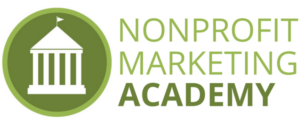Board fundraising tops the list of challenges for both nonprofits and their board members. Although not intentional, many nonprofits may inadvertently set up board members to fail with fundraising.
To gauge if your board members have what they need for success, start by looking at your onboarding experience for new board members.
Traditional onboarding has prospective board members attending a board meeting or two to see if they are a good fit for the board. They are often invited to a few board committee meetings, or they are asked to meet with one or two board members separately for a mentoring session. More sophisticated onboarding includes a “board guide” filled with important information such as copies of the professional bios of other board members, past meeting minutes, and copies of the strategic plan and fund development plan. Strategic onboarding goes even deeper and provides an online resource center where board members can access information, marketing collateral, and more.
What does your onboarding process look like? Are you giving board members a solid foundation to use with storytelling, advocacy, and networking?
Now, look at your defined board member roles and expectations.
Do your board members have the resources they need to carry out these expectations? Because at the end of the day, nonprofits need board members to help govern the nonprofit strategically to ensure enough resources to operate effectively.
Nonprofits rely on board members for their connections, their expertise, and their influence. Specifically, these attributes play a large part in the board member’s role in fundraising. One of the most important roles of a nonprofit board member is fundraising. However, it is also one of the most challenging responsibilities for both nonprofit leaders and board members alike.
Why is that?
The board fundraising challenge
Most often, we can tie poor performance of board member fundraising to two things: lack of resources for board members and poor communication from both nonprofit staff and board members. The very structure of nonprofit governance is also a catalyst for poor board relations. That’s because traditionally, nonprofit leaders expect board members to remain at arm’s length and not engage in the day-to-day operations. Board members are positioned in a ‘need-to-know’ basis of information sharing. Nonprofit leaders need them to trust that the nonprofit staff is effectively managing the operations. That’s a hard pill for anyone to swallow, especially when you are fiduciarily responsible for the direction of the nonprofit.
On the other hand, professional nonprofit fundraisers benefit from their strong background in fundraising, and from their skills in marketing and communications. Furthermore, they have a deep understanding of the nonprofit because they are working with the team day in and day out. That’s a recipe for success.
The article The Simplest Way To Get Board Members To Help With Fundraising suggests getting board members involved in the donor thank-you process to ease them into fundraising. Below is a look at a few more ways to use fundraising expertise to support board members in their fundraising efforts.
Step up your nonprofit board fundraising success with these five tips:
- From the very beginning, work to identify what each board member needs from the nonprofit to help establish a strong foundation of trust. What information do they need about the nonprofit, at what frequency, and to what level of detail? And be prepared to provide it because a lapse in information sharing might be construed as a breach of trust.
- Engage all board members in the fundraising planning process. Explain the development strategies in detail so they can see how they may contribute to the strategy. Be open to board member feedback. Board members may find that a strategy doesn’t foster board member participation.
- Nonprofit staff should have a clear understanding of each board member’s fundraising experience and then work with each board member to identify ways to help them with fundraising efforts, typically through training, content development, and providing easy access to marketing resources.
- Fundraising success relies heavily on storytelling. Help board members craft their own story for why they support the nonprofit and why they personally donate to the nonprofit. Provide board members with a short, but compelling story of the organization that clearly states the case for support. This is the story they will share within their sphere of influence. Include important statistics and case examples as add-on information.
- Provide board members with answers to the questions that most donors and sponsors will likely ask. To get to this list of questions, survey your nonprofit’s donors and sponsors to learn what information they needed when deciding whether or not to support your nonprofit. What information was most compelling for them?
Take your nonprofit board member fundraising to a new level.
The tips above will give your nonprofit fundraising a boost, but why not take your fundraising to its highest level? Give your board members a strategy to move them from good fundraising to GREAT fundraising. Sign up for the Nonprofit Marketing Academy’s free leadership training, available on demand.





